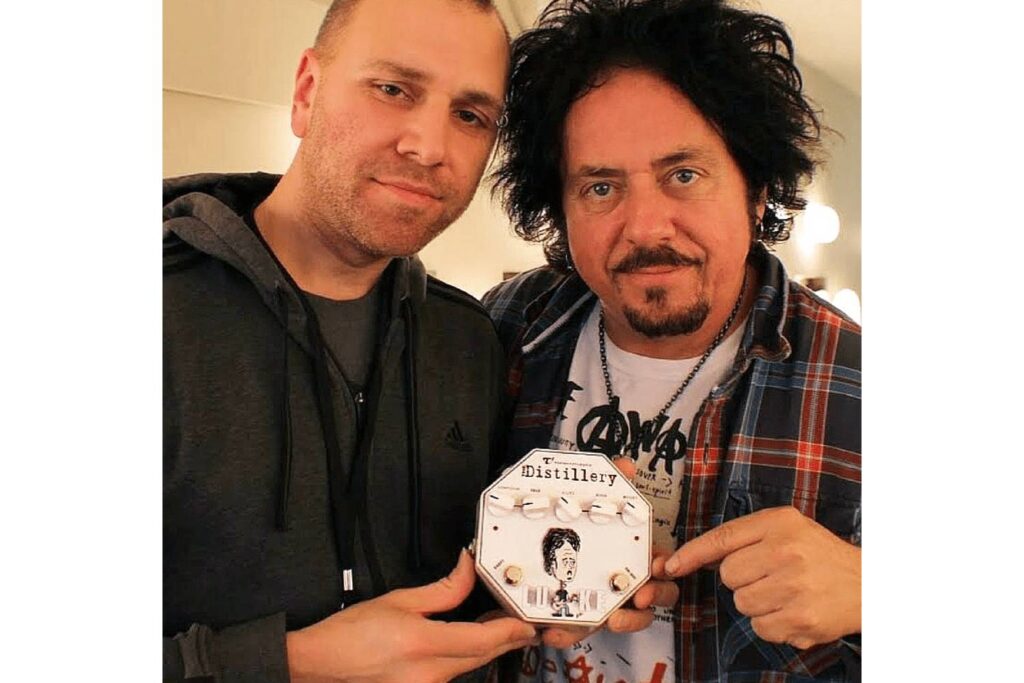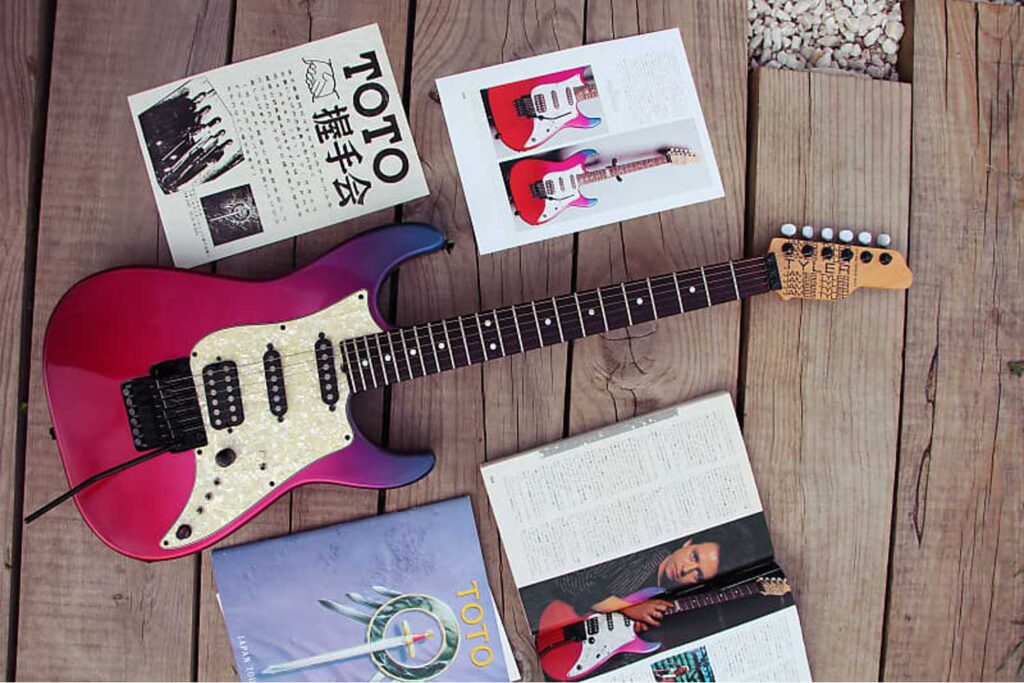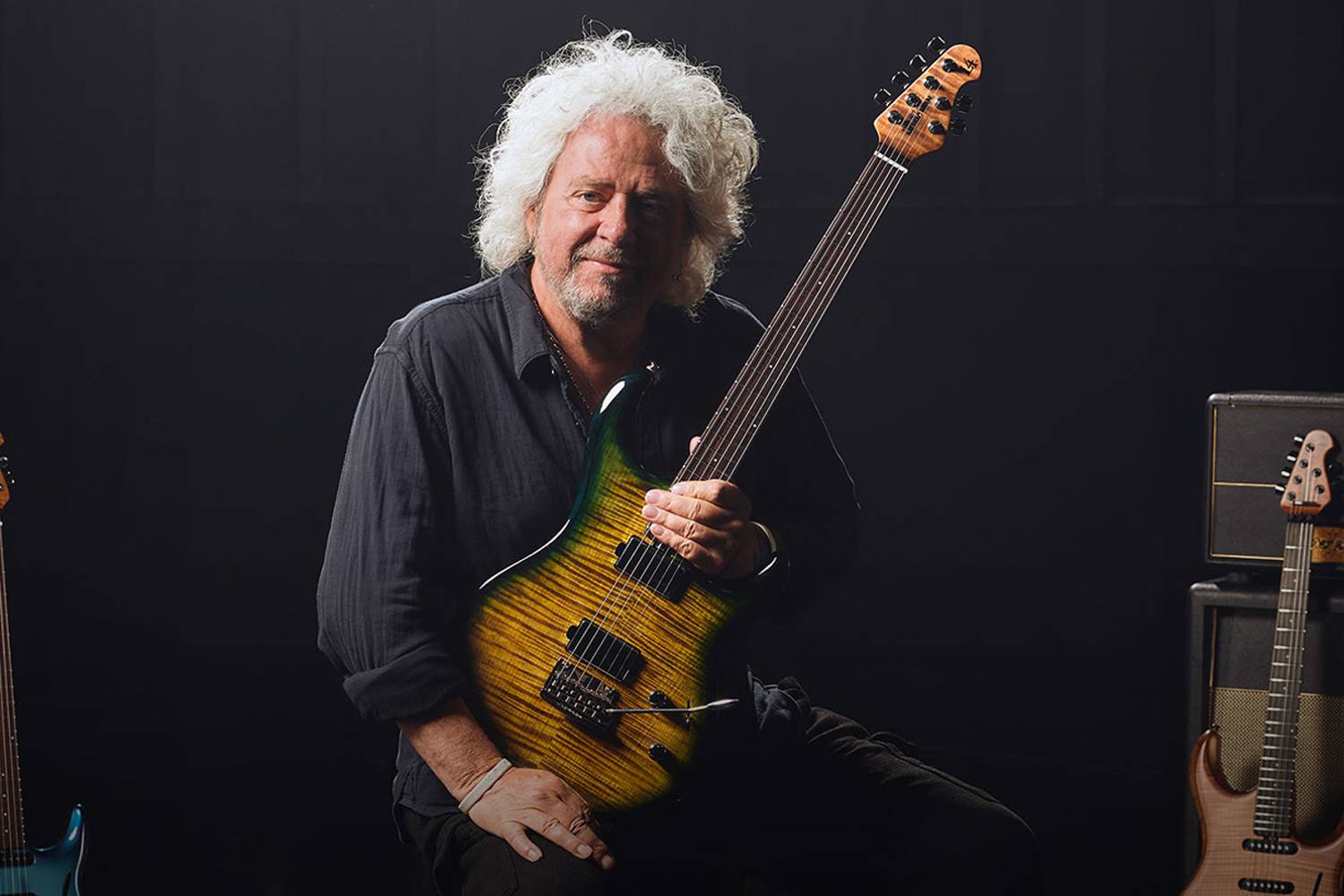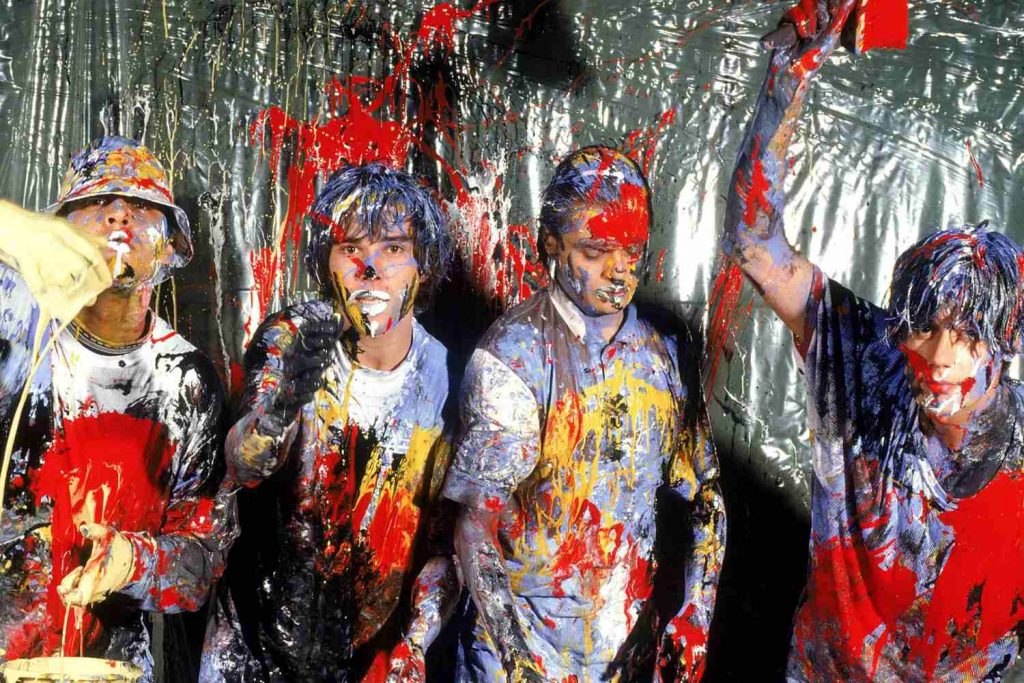While his catalogue of gear rivals that of a Black Friday sale, we decided to dive into a few choice pieces that speak to Steve's unique approach to the guitar.
Steve Lukather is a guitar players’ guitar player. While being the sole continuous founding member of Toto is a huge achievement in and of itself, his skill on the instrument has seen him session for Michael Jackson and Boz Scaggs, while also releasing multiple solo albums. What’s more, he’s been playing Ernie Ball Music Man guitars for 30 years, reinventing his own artist models consistently as his needs change, always harnessing the latest technology.
Read up on all the latest features and columns here.
While his catalogue of gear rivals that of a Black Friday sale, we decided to dive into a few choice pieces that speak to Steve’s unique approach to the guitar. Some boutique, some classic, though a few bits of kit here have been staples because of players like Steve Lukather.
Steve Lukather Ernie Ball Music Man Luke IV
The recently released 30th Anniversary Luke IV follows a line of ‘Luke’ guitar. Refined and designed with the cutting edge in mind, there’s a Luke IV Anniversary (HSS) as well as Luke IV HH and SSS versions. All available in multiple colours, the guitars share roasted maple necks and the Luke body shape, a double cutaway electric style without that’s a little more rounded than other designs.
The Anniversary model specifically boasts an exotic black limba body with figured maple top, figured, roasted maple neck and an ebony fretboard. It has a HSS pickup configuration with supremely dynamic pickups. These feature an (up to) 12dB gain boost via a push/pull, five way switching and a standard tone kob. This offers a huge range of tones, from elastic, single-coil Stratty tones to a full-bodied humbucker tone from the bridge position, with varied tones being something that Lukather needs to call on with his huge catalogue of music.
Ernie Ball Music Man ‘Luke’
The Luke body shape has become a staple of the Ernie Ball Music Man range for some time now, beginning with the Luke I, through to II and III. Often opting for a HSS configuration, the Luke series takes notes from some classic designs and combines them into a more modern take on the double-cutaway electric.
Tremolos aplenty, while also feature various switching options to give Steve options for different tones, even before his signal has hit his comprehensive pedalboards.
Bogner Ecstasy 101B
The Bogner Ecstasy was released in the early 90s and is a three-channel amplifier head. They’re 120-watts, each channel having multiple voices for maximum flexibility.
There’s a huge list of amps that Steve has used for studio and live work with either Toto or his list of session work, including some amp modellers! More recently though, Steve has been performing with a trio of Bogner Ecstasy 101B heads. While one serves as a spare, the main rig of two heads is used with one amp giving a main tone, receiving signal from his guitar and more conventional ‘pre’ amplifier effects like drive, compression, volume etc. The effects loop ‘Send’ from this main amp then gets sent to stereo time-based effects like delay and reverb, both the main amplifier and the second Bogner receiving this signal via their effects loop ‘Return’, making for big wide stereo effects.
Strymon engineering
These stereo effects include some Strymon pedals like a Strymon blueSky Reverberator and a Lex Rotary effect. The mono signal comes in from the ‘Send’ on his Bogner, is split into stereo for the pedals and the left and right signals are returned to the separate heads for big, expansive stereo effects. Each of the speaker cabinets are mic’d up for stereo sound through the FOH (front of house).
The Strymon blueSky is now on its redefined V2 version, but at its core is a stereo reverb pedal. It has switchable reverb types, modulation, as well as a little EQ, shimmer and pre-delay.
The Lex is a is rotary effect pedal, harnessing Leslie style modulation. You can adjust rotary speeds, mix in dry signal and switch between the sound of a microphone in front of behind the speaker cabinet. Differentiating the left and right signal like the Lex does makes for a wider sound, allowing for huge ambience when needed or simply massive, modulated tones.
Digitech Hardwire pedals
The Digitech Hardwire range of pedals were hugely popular in the 2000s, Steve switching between multiples at different times. Their pedals range from more simple effects like Valve Distortion and a Delay/Looper to more complex arrangements like Stereo Chorus, Stereo Tremolo and Stereo Phaser.
The rundown with Strymon looks like three Digitech HardWire DL-8 Delay/Loopers.
Ibanez Tube Screamer
Another pedal worth the mention from the Strymon rundown is the Ibanez Tubescreamer, specifically the TS9. The TS9 was part of the ‘9-Series’ of pedals from Ibanez, following the TS808 that was produced throughout the 70s.
The TS9 specifically differed in its output circuitry, offering a brighter tone that wasn’t as smooth as the TS808. Used extensively for refining an already driven amp, the TS9 is a great option for tight, controlled solos as either a boost or as additional gain.
ToneConcepts The Distillery “Luke”
A more boutique and interesting additional pedal-wise is the ToneConcepts Distillery “Luke”. The ToneConcepts Distillery is a five-knob pre-amp/boost designed for electric guitar. Lukather was so blown away by the pedal that he approached ToneConcepts for his own custom design, resulting in the “Luke”.
While seemingly impractically shaped, the “Luke” offers more access to the five knobs with its octagonal shape and two footswitches, also offering more refined custom pot tapers for more accurate control.

FoxGear EchoSex
The EchoSex pedal pays homage to the famous Binson Tape Delays of the 60s and 70s, the EchoRec. Gritty, tapey delay match perfectly with guitar tones. While the original units fetch a whole lot of money today, while also being a little too fragile for extensive touring, Lukather’s choice for this sound is the FoxGear EchoSex, now also having a Steve Lukather anniversary model. The T7E he’s used specifically takes everything great about the original Italian units and re-appropriates it for the modern day.
Aesthetically it feels like home, but under the hood the T7E does away with mechanical moving parts, meaning no maintenance while using modern circuitry to retin the classic sound of the originals.
James Tyler Studio Elite Jimburst
We’ve discussed James Tyler Guitars before, having made a name for themselves building custom guitars for the best and brightest stars in the elite studio session guitarist scene… including Steve Lukather, who appropriately has a Studio Elite.
The Studio Elite is, again, traditionally a HSS layout. It has a Floyd Rose and angled pickups to squeeze every ounce of tone and clarity out of the guitar. Building on a classic design, the James Tyler Guitars refine every ounce of the guitar’s playability, tone and design.

Keep reading about the Luke IV here.







